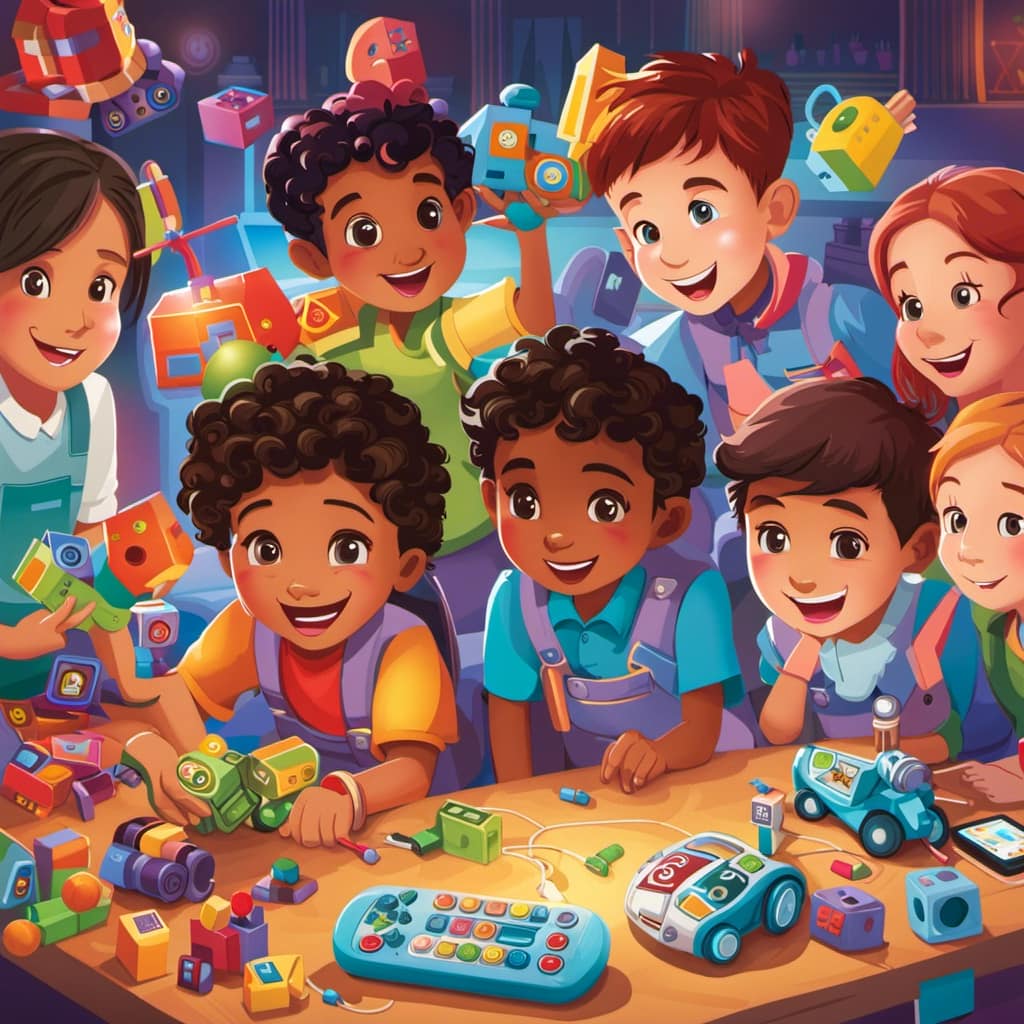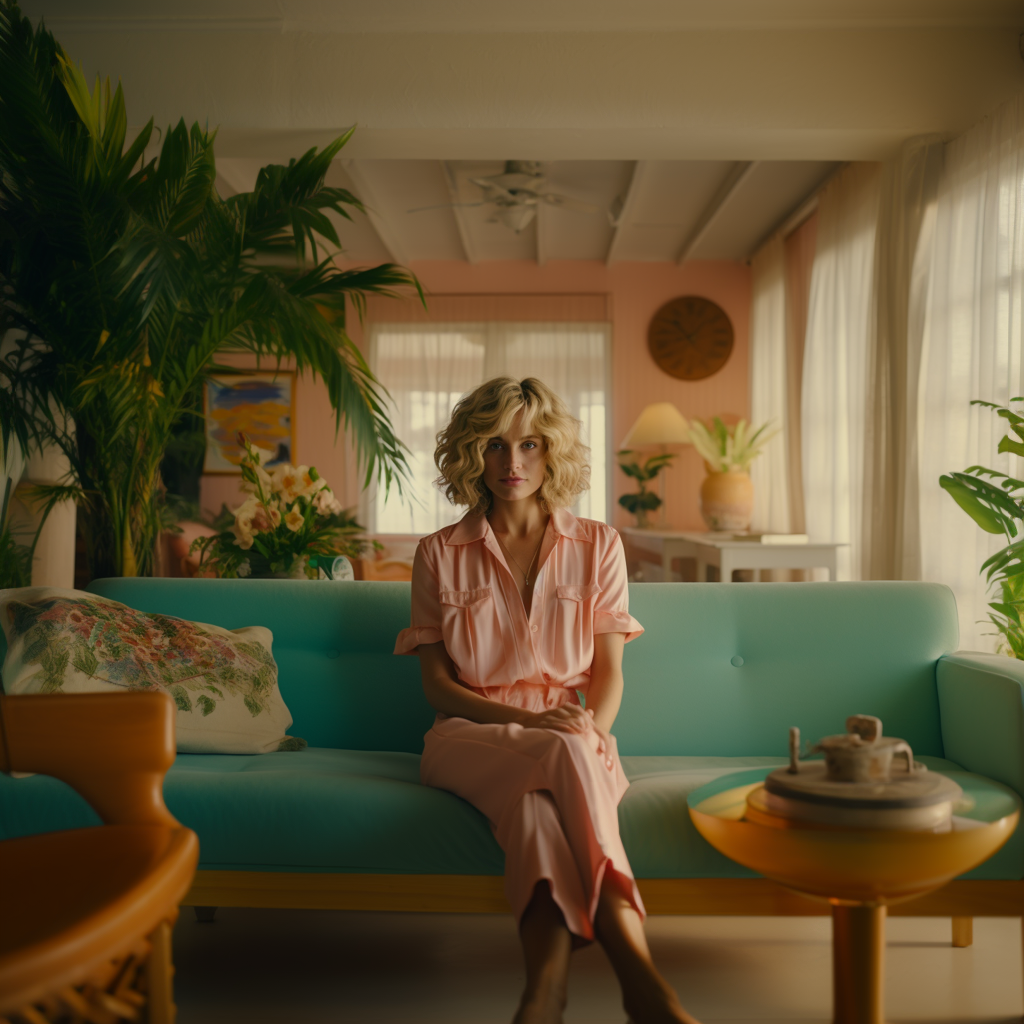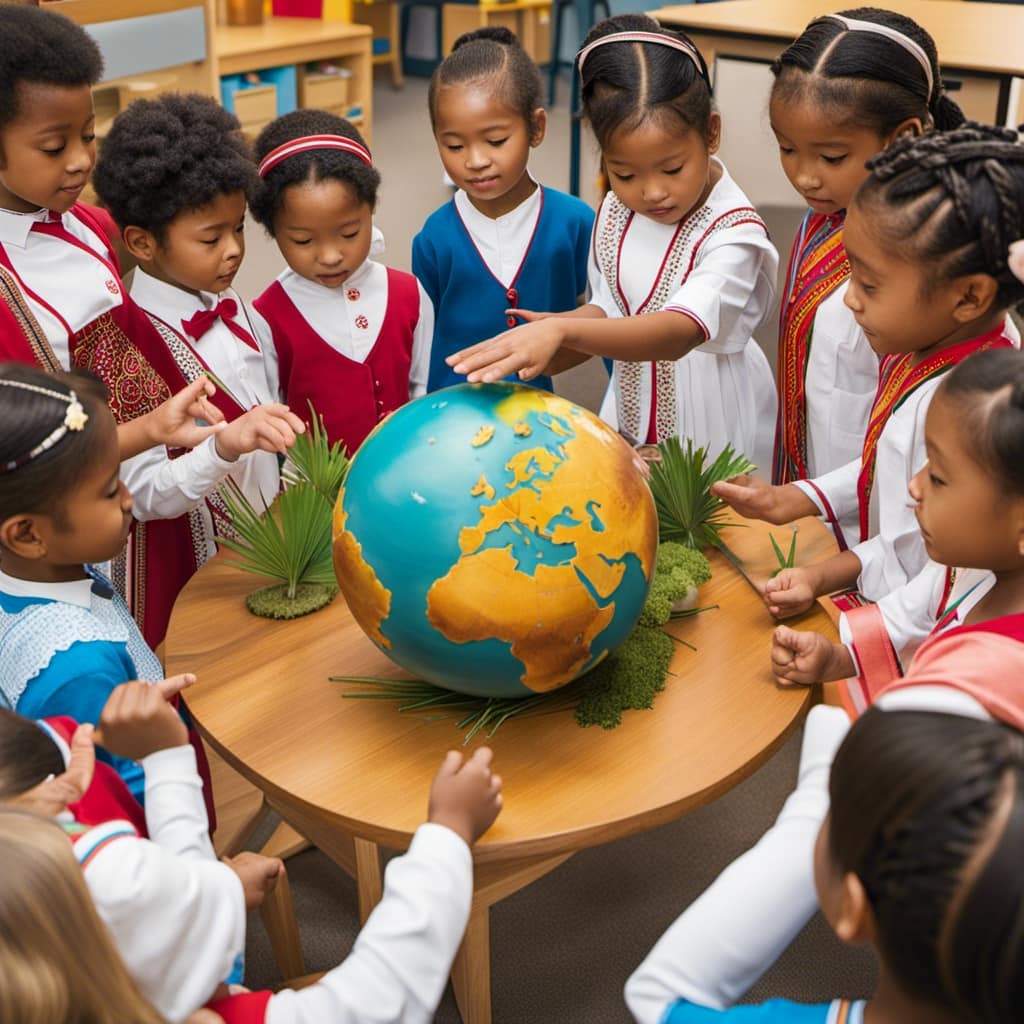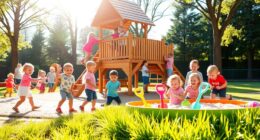As a parent, I have found that the more toys my child has, the harder it is to keep things organized. Finding storage solutions that are easily accessible while also reducing clutter can be a constant battle.
That’s why I turned to Montessori-Inspired Toy Organization. This method not only promotes focus, creativity, and independence in children, but it also creates a calm and clutter-free play space.
By involving children in the organization process and incorporating open-ended toys, we’re fostering a sense of responsibility and organization from an early age.
So, let’s dive into the world of Montessori-Inspired Toy Organization and discover how it can transform your child’s playtime.
Key Takeaways
- Montessori-inspired toy organization promotes focus and creativity.
- It teaches responsibility and organization skills.
- It enhances independent playtime.
- It creates a clutter-free environment.
Benefits of Montessori-Inspired Toy Organization
I’ve noticed that organizing my child’s toys using Montessori principles has really helped promote their focus, creativity, and independence.
By providing a well-organized and clutter-free environment, it allows my child to focus on their play and engage in imaginative activities without distractions.
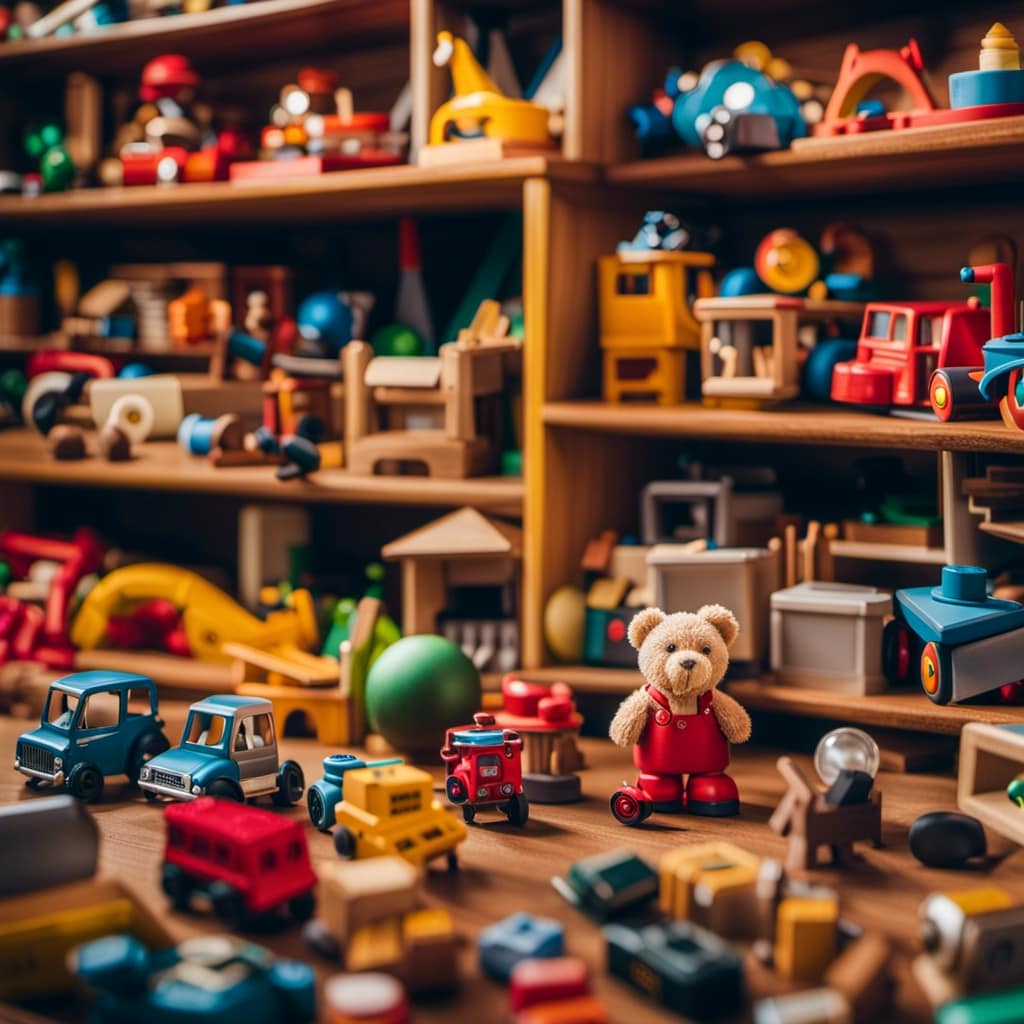
The clear organization of toys also enhances their creativity, as they can easily find and access different materials for their playtime.
Furthermore, the Montessori-inspired toy organization encourages independent playtime and imagination.
With labeled bins and open shelves, my child can independently choose and explore various toys, fostering their decision-making skills and self-directed learning.
Overall, incorporating Montessori principles in toy organization has truly transformed my child’s playtime, promoting focus, creativity, and organization, while enhancing their independent playtime and imagination.
Choosing the Right Storage Solutions for Montessori Toys
I prefer using low, open shelves for easy access to toys when choosing storage solutions for my Montessori-inspired organization. Functional storage solutions are essential in maintaining an organized and clutter-free play area.
When designing an organization system, it is important to consider accessibility and organization. Here are some key points to keep in mind:
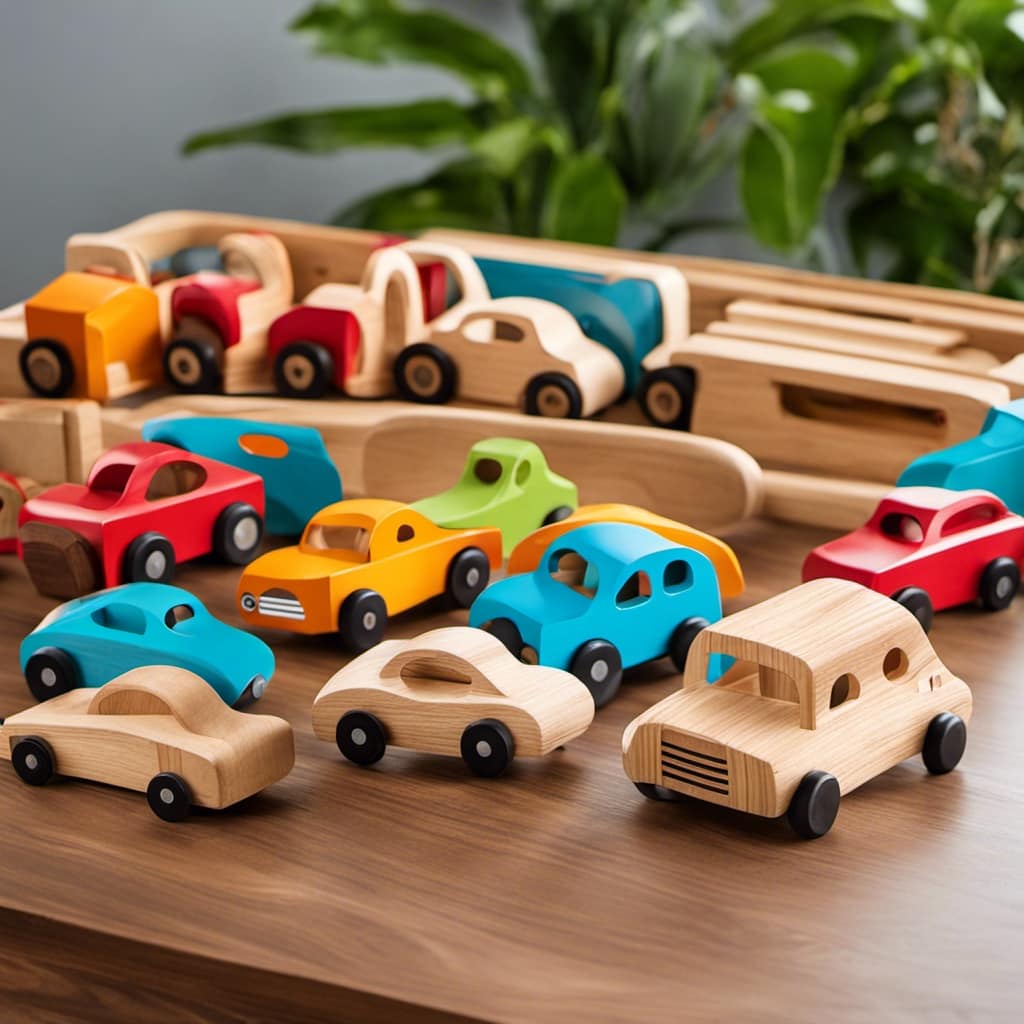
-
Incorporate labeled bins or baskets for sorting and categorizing toys. This promotes responsibility and teaches children how to organize their belongings.
-
Design a storage system that supports independence. By having low shelves, children can easily reach and put away their toys, fostering a sense of ownership and autonomy.
Incorporating Open-Ended Toys in Montessori Organization
When incorporating open-ended toys into my Montessori-inspired organization, I encourage imaginative and creative play by providing a variety of options for my child to explore. Open-ended toys offer endless possibilities and promote sensory development and problem-solving skills. By incorporating natural materials in toy organization, such as wooden blocks, fabric dolls, and natural art supplies, I create a visually appealing and tactile experience for my child. Natural materials not only stimulate the senses but also align with Montessori principles of connecting children with the natural world. To evoke emotion in the audience, I have created a table below that showcases the benefits of open-ended toys and natural materials in toy organization.
| Benefits of Open-Ended Toys | Benefits of Natural Materials | Benefits of Montessori Toy Organization |
|---|---|---|
| Promotes imagination | Stimulates the senses | Fosters independence |
| Encourages creativity | Connects with nature | Enhances problem-solving skills |
| Develops critical thinking | Eco-friendly and sustainable | Promotes focus and concentration |
Engaging Children in the Toy Organization Process
Teaching age-appropriate sorting and categorizing skills is an important aspect of engaging children in the toy organization process. By involving parents and teaching organization skills, we can create a sense of ownership and responsibility in children.
Here are a few ways to engage children in the toy organization process:
-
Make it a fun and interactive activity:
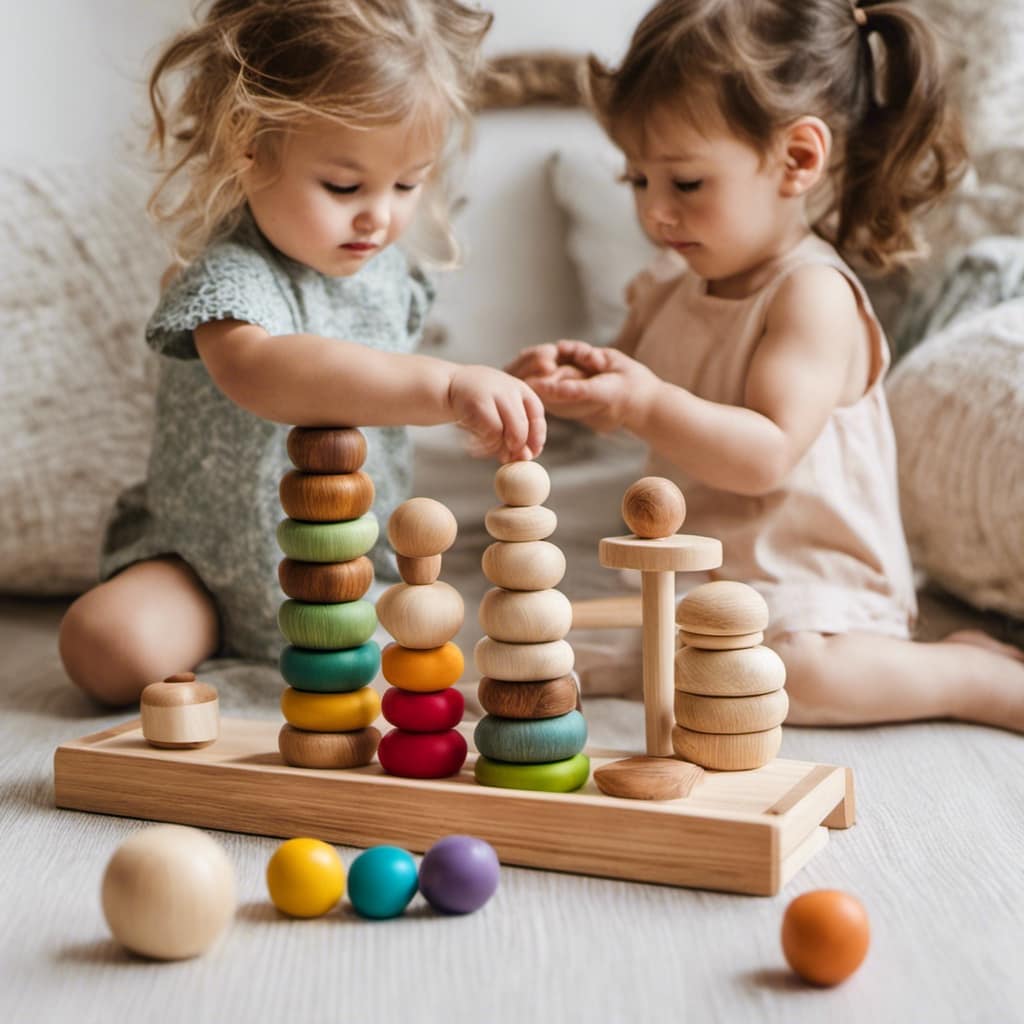
-
Turn sorting and categorizing into a game by using colorful bins or baskets.
-
Create a reward system to motivate children to participate.
-
Provide clear instructions and guidance:
-
Show children how to organize toys by demonstrating the process step-by-step.
-
Break down the task into smaller, manageable parts to avoid overwhelming them.
Adapting Montessori Toy Organization for Different Age Groups
To adapt Montessori toy organization for different age groups, I consider age-appropriate toy selection and organization.
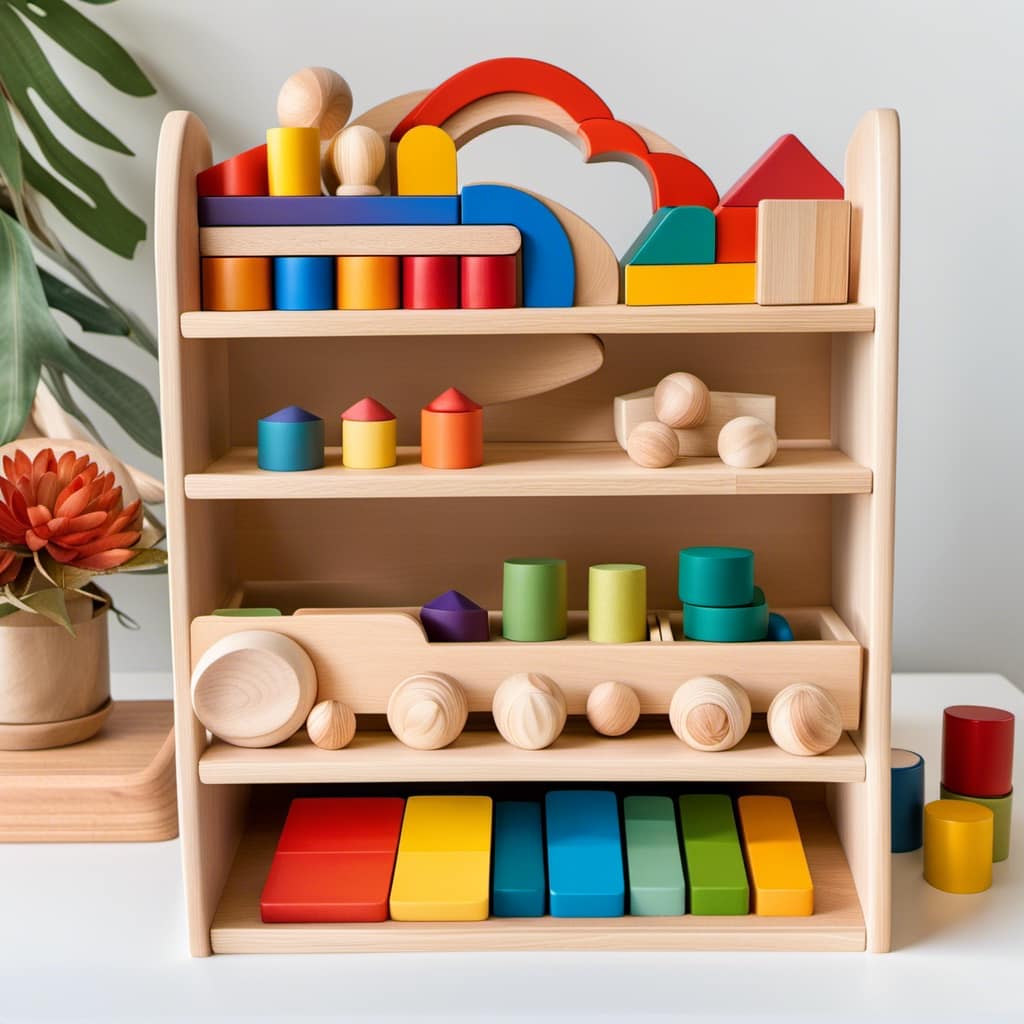
It’s essential to provide toys that are suitable for each developmental stage. For younger children, I focus on toys that promote the development of practical life skills. This includes toys that encourage fine motor skills, hand-eye coordination, and problem-solving. I also ensure that the toys are safe and free of small parts that could pose a choking hazard.
As children grow older, I introduce more complex toys that challenge their cognitive abilities and foster independence. These toys may involve building, problem-solving, and imaginative play.
Creating a Calm and Clutter-Free Play Space
I prioritize creating a calm and clutter-free play space by implementing storage solutions that promote organization and accessibility. By creating a peaceful and organized play area, I aim to promote a sense of calm and focus in playtime.
Here are two key ways I achieve this:
-
Utilize low, open shelves: I find that using low, open shelves allows children to easily access their toys without needing assistance. This promotes independence and encourages them to engage in self-directed play.
-
Incorporate labeled bins or baskets: Sorting and categorizing toys becomes much easier when labeled bins or baskets are incorporated into the play space. This not only helps children keep their toys organized but also fosters responsibility and teaches organization skills.
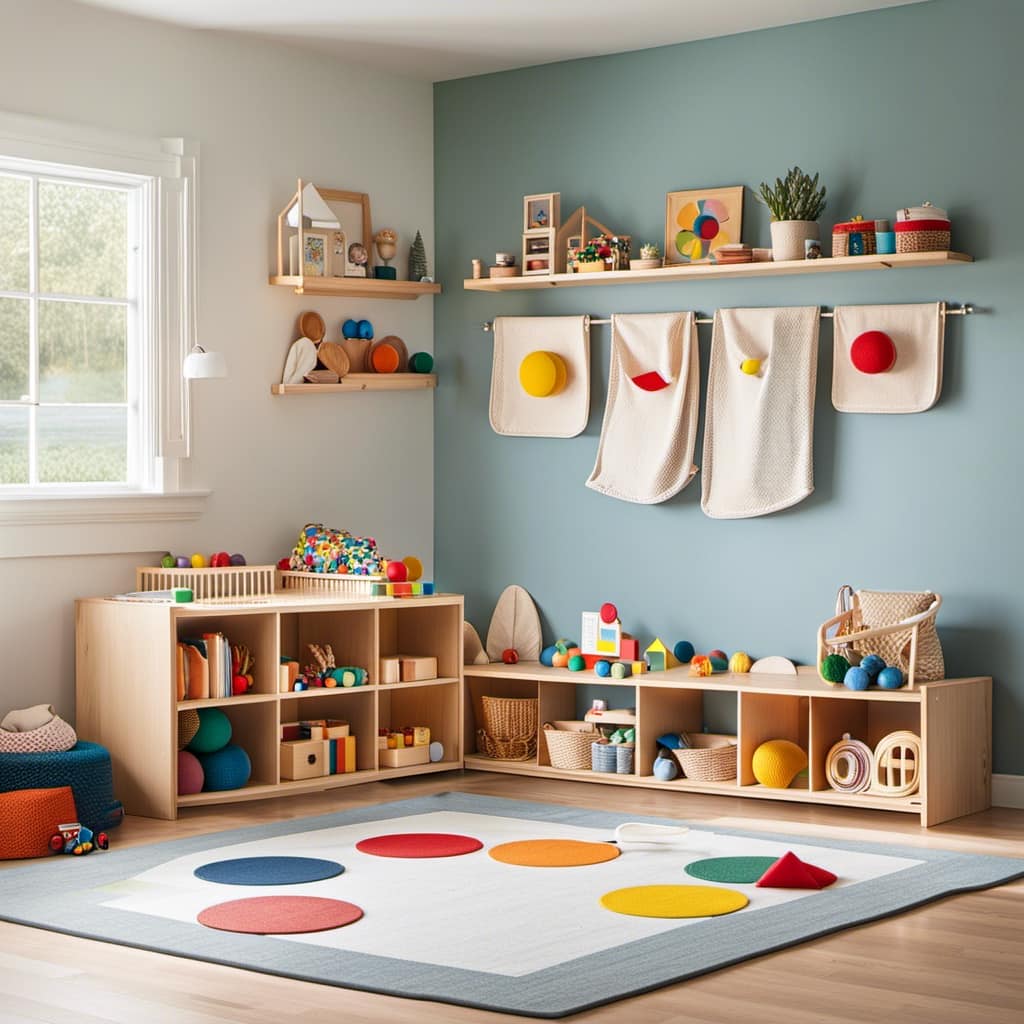
Promoting Independent Play and Exploration
By incorporating open-ended toys into the play space, I have observed that children are encouraged to explore and engage in imaginative and creative play. These toys, which do not have a predetermined purpose or outcome, promote independent exploration and allow children to follow their own interests and curiosities.
I have noticed that when given the freedom to manipulate and interact with open-ended toys, children become active participants in their play, rather than passive recipients of entertainment. They use their imagination to transform these toys into various objects and scenarios, fostering imaginative play. This type of play not only stimulates their creativity but also enhances their problem-solving skills and critical thinking abilities.
It is truly fascinating to witness how open-ended toys can inspire such independent exploration and foster a child’s natural inclination for imaginative play.
Maximizing Creativity and Imagination With Montessori Toys
As we continue our exploration of Montessori-inspired toy organization, we now delve into the exciting world of maximizing creativity and imagination with Montessori toys.
One of the key principles of Montessori education is to promote independent play and exploration. By providing children with open-ended toys, we encourage them to think critically, problem-solve, and explore different possibilities. These toys allow children to use their imagination and creativity to create their own unique play scenarios.
When children engage with open-ended toys, they are not limited by rules or predetermined outcomes. Instead, they have the freedom to explore, experiment, and create their own narratives. This type of play fosters independence and self-directed learning, as children take ownership of their playtime and confidently make decisions.
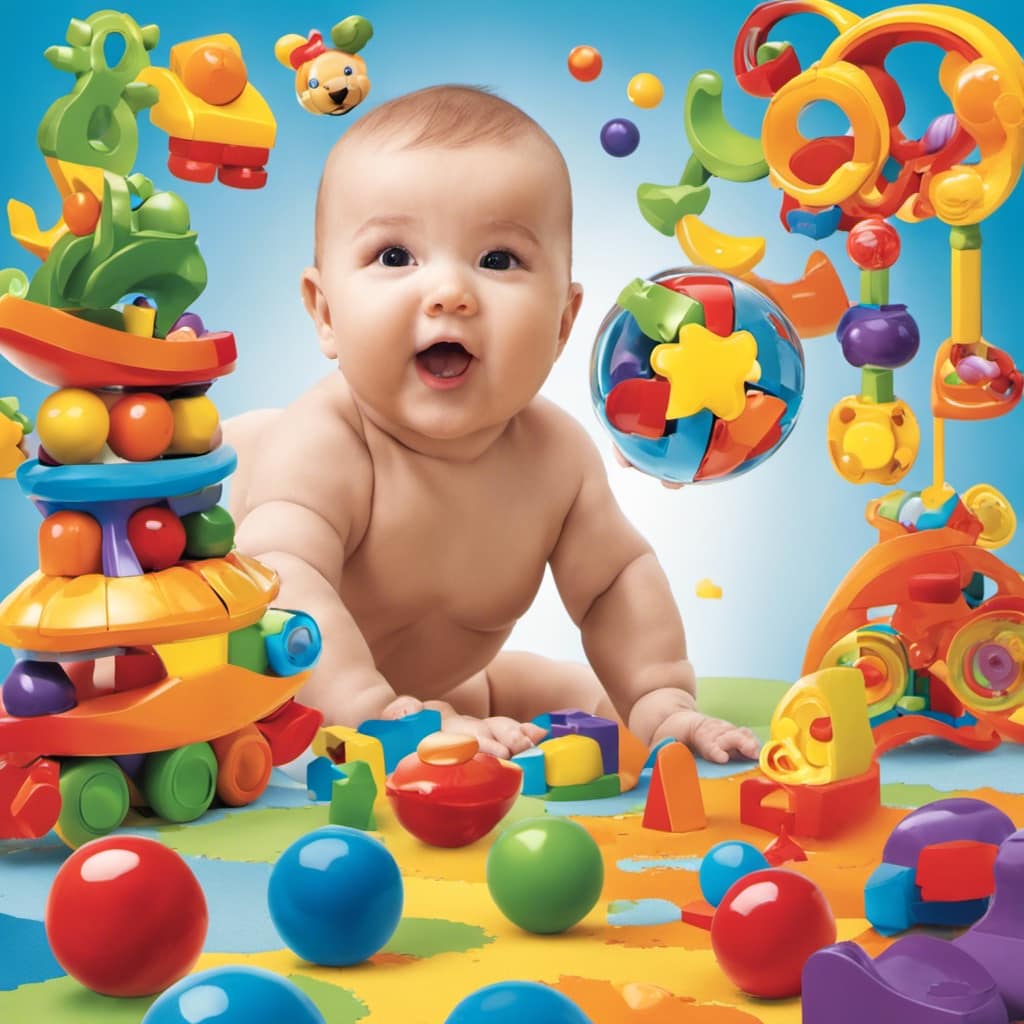
Frequently Asked Questions
How Can Montessori-Inspired Toy Organization Benefit Children With Special Needs?
Montessori-inspired toy organization benefits children with special needs by promoting focus, independence, and creativity. Strategies include incorporating accessible storage solutions and engaging children in the organization process to foster responsibility and ownership.
What Are Some Tips for Organizing Toys in a Small Living Space?
Some tips for organizing toys in a small living space include maximizing vertical storage, using multi-functional furniture, and implementing a rotating toy system. These strategies can help create a clutter-free and organized environment.
Are There Any Specific Toys or Materials That Should Be Included in a Montessori-Inspired Toy Organization System?
When it comes to Montessori-inspired toy organization, incorporating toy rotation and taking a minimalist approach can be beneficial. By offering a limited selection of toys at a time, children can focus better and engage in more meaningful play experiences.
How Can Parents Involve Their Children in the Process of Decluttering and Donating Toys?
To involve children in decluttering and donating toys, parents can explain the importance of sharing with others, let them make decisions about what to keep or give away, and provide a designated area for donations.
Are There Any Potential Drawbacks or Challenges to Implementing a Montessori-Inspired Toy Organization System?
Implementing a Montessori-inspired toy organization system can have its challenges. Maintaining organization can be tricky, and sustaining children’s interest in keeping it tidy may require some creativity. However, the benefits outweigh the drawbacks.
Conclusion
In conclusion, Montessori-Inspired Toy Organization is a transformative approach that fosters focus, creativity, and independence in children.
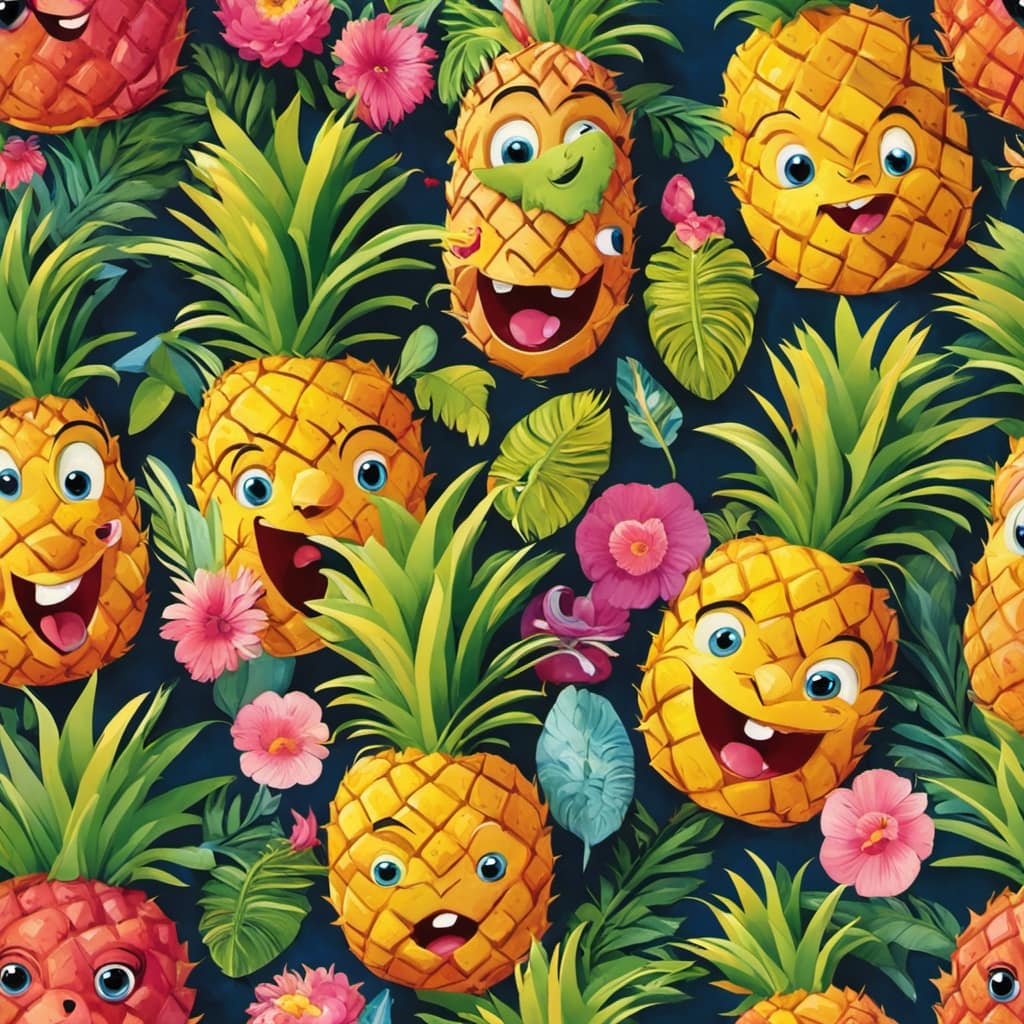
By involving children in the toy organization process, we empower them with valuable skills and teach them responsibility.
Did you know that a study found that children who have organized play spaces are more likely to engage in independent play for longer periods of time? This statistic highlights the importance of creating a calm and clutter-free environment that supports children’s cognitive and social-emotional development.
With Montessori toys and thoughtful storage solutions, we can maximize children’s imagination and promote their overall well-being.


